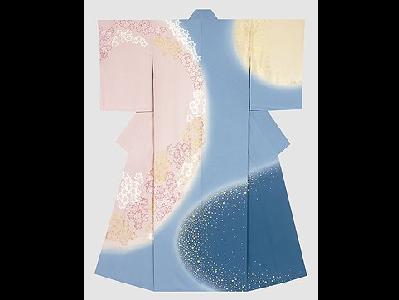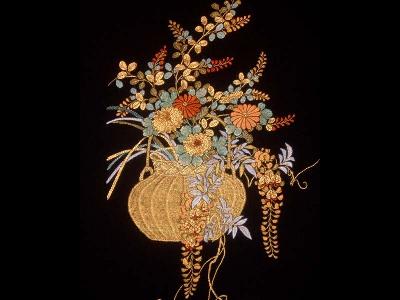刺繍 Shisyuu Japanese Embroidery
|
Embroidery is the art or handicraft of decorating fabric or other materials with designs stitched in thread or yarn using a needle. The art of embroidery was introduced to Japan from China about 1,600 to 1,700 years ago. Since then, embroidery had been the only way to decorate kimono until the pattern dyeing techniques of Yuzen was introduced. A lot of embroidery techniques were developed in every area of the country for a long time, which led to the present elaborate form of Japanese embroidery.
In ancient Japane, it was thought that stitches had a magical power. For this reason, there was a custome to add an embroidery motif called “Semori” on the back of a garment for children. Semori literally means a back protector. And as children’s kimono had fewer stiches than those of adults, Semori was added as a kind of charm to protect children from evil spirits.
From the similar ideas, embroidery was added to the junihitoe dress, a formal court lady costume in the Heian period (794-1192) and armors for samurai. These religeous element became a part of the bases for the development of embroidery in Japan and “stitches up” the Japanese style of elegance.
In ancient Japane, it was thought that stitches had a magical power. For this reason, there was a custome to add an embroidery motif called “Semori” on the back of a garment for children. Semori literally means a back protector. And as children’s kimono had fewer stiches than those of adults, Semori was added as a kind of charm to protect children from evil spirits.
From the similar ideas, embroidery was added to the junihitoe dress, a formal court lady costume in the Heian period (794-1192) and armors for samurai. These religeous element became a part of the bases for the development of embroidery in Japan and “stitches up” the Japanese style of elegance.
- name
- Japanese Embroidery













